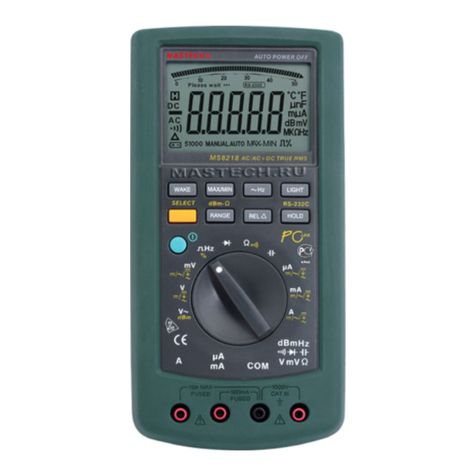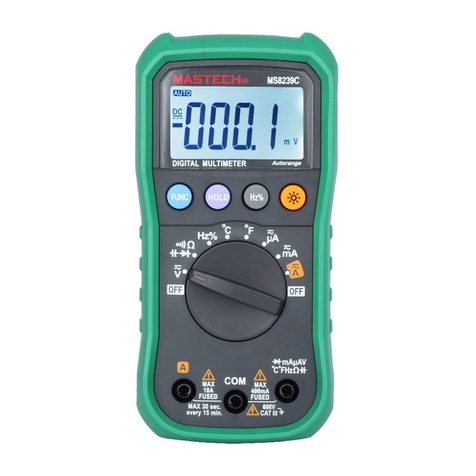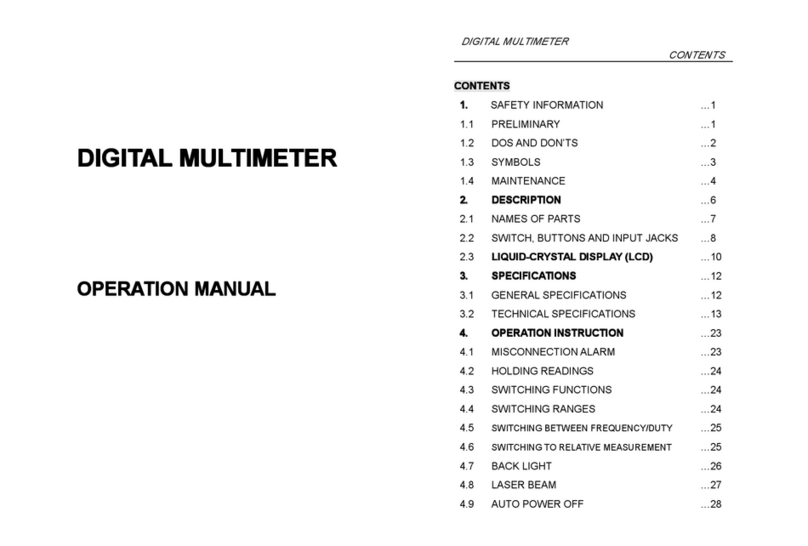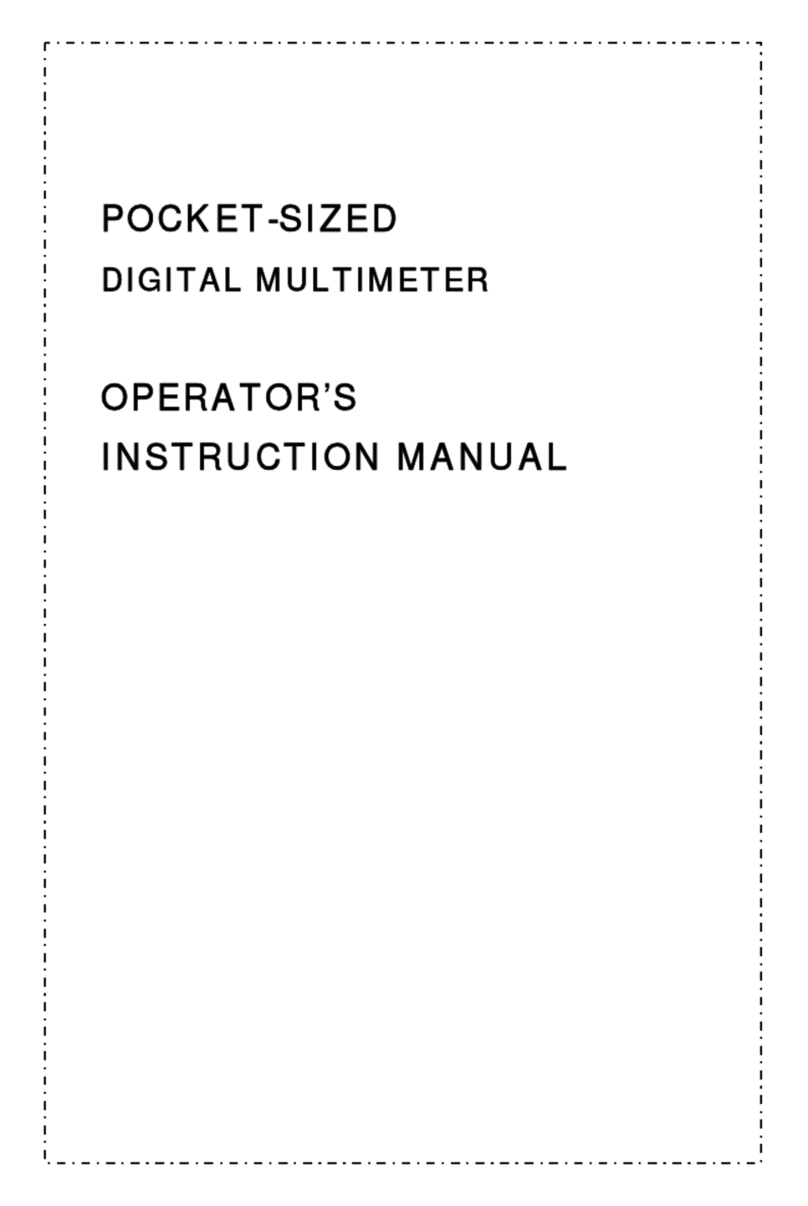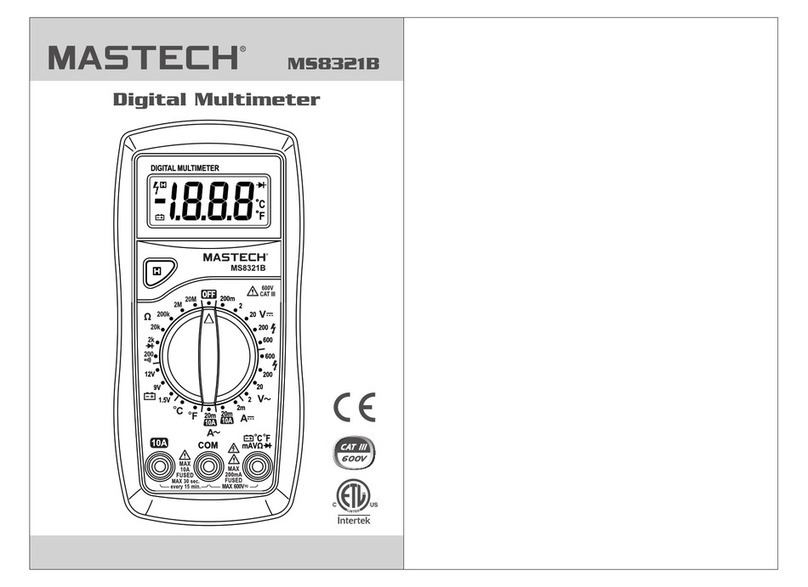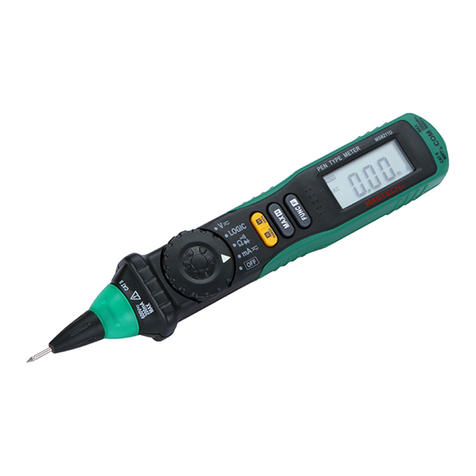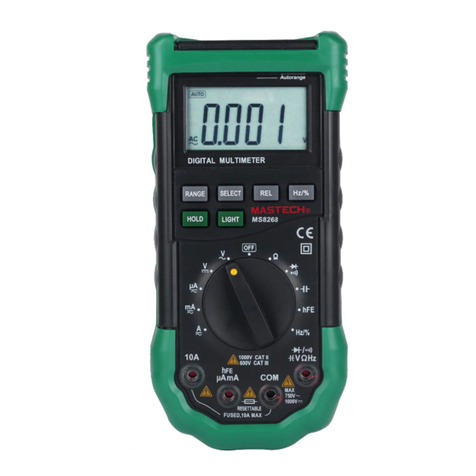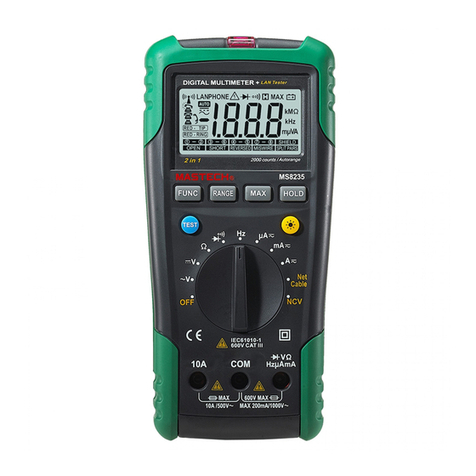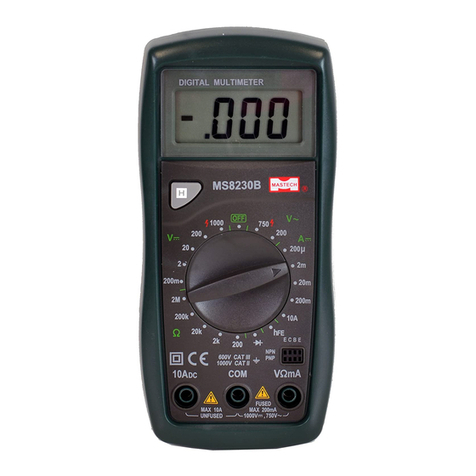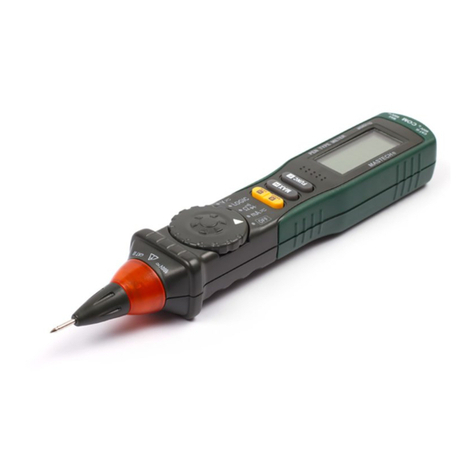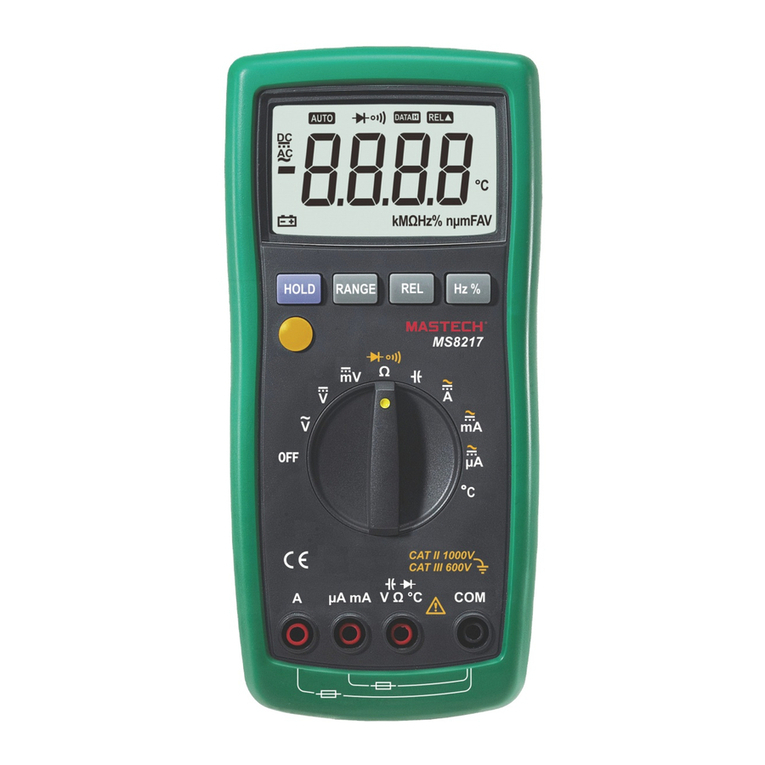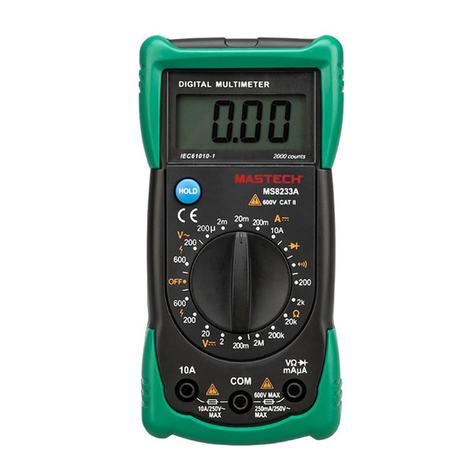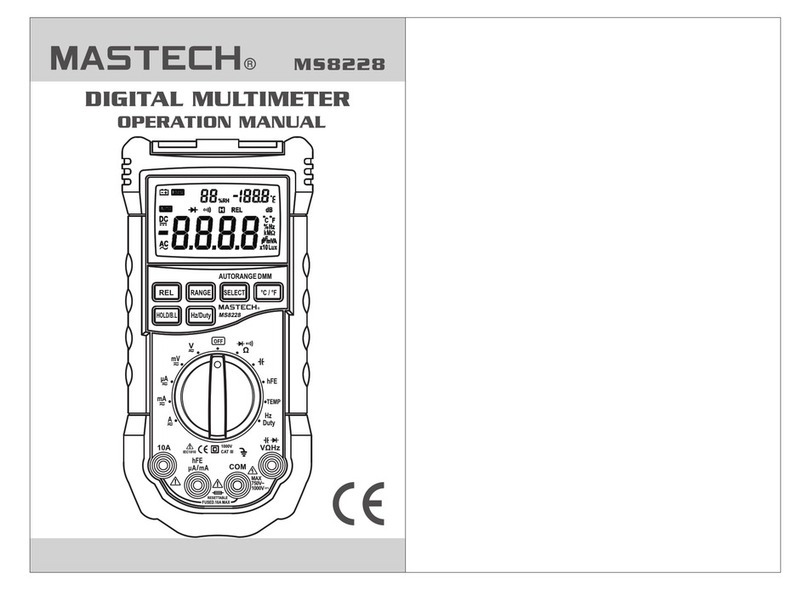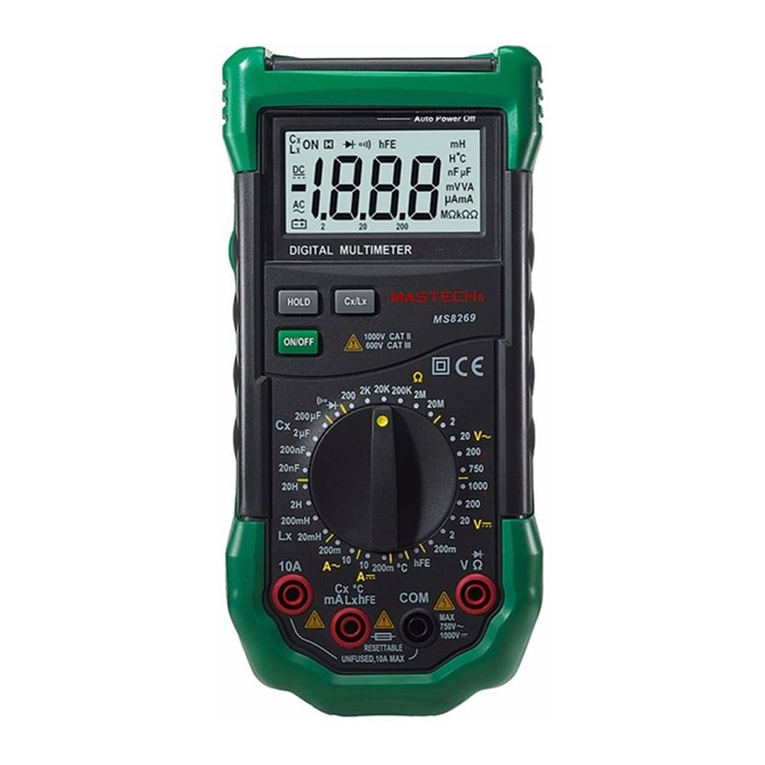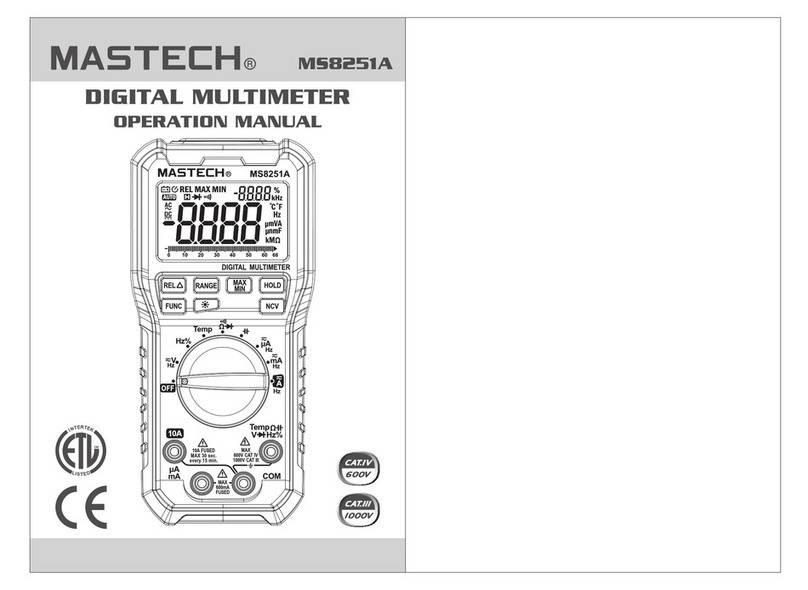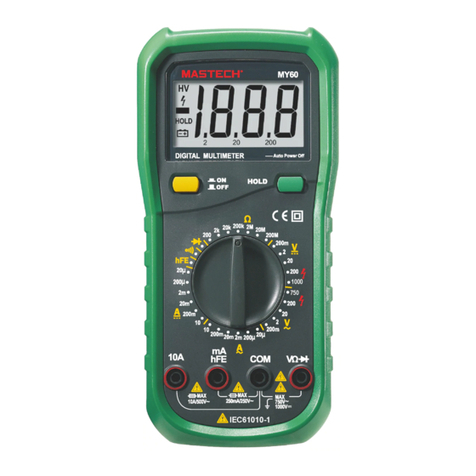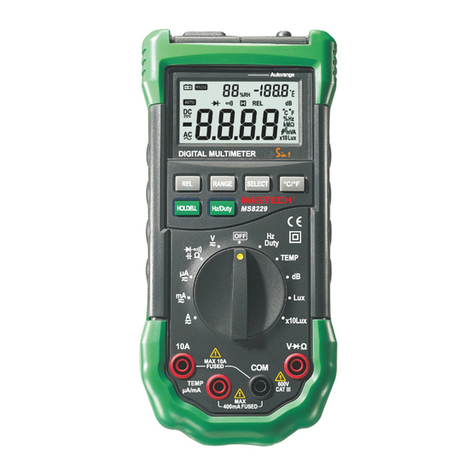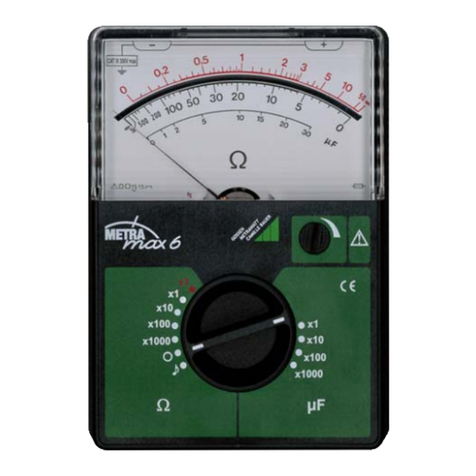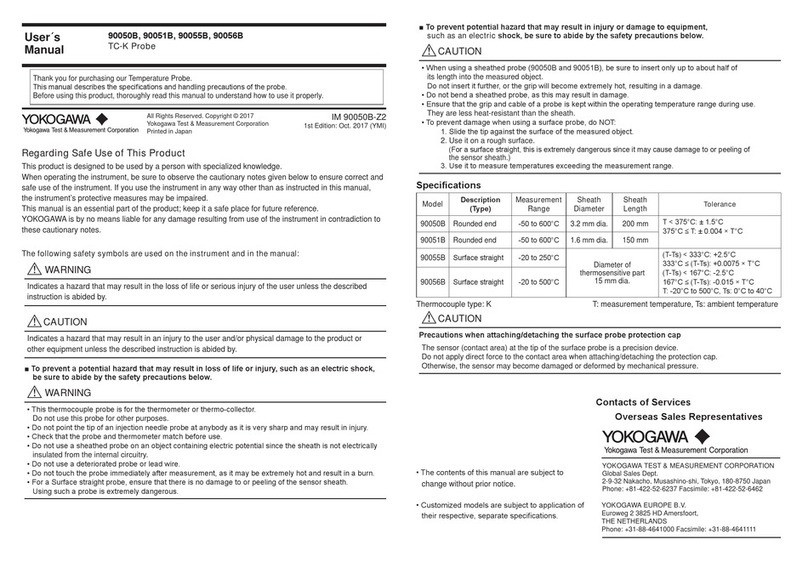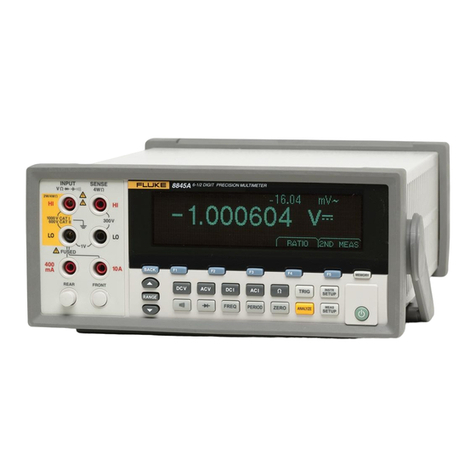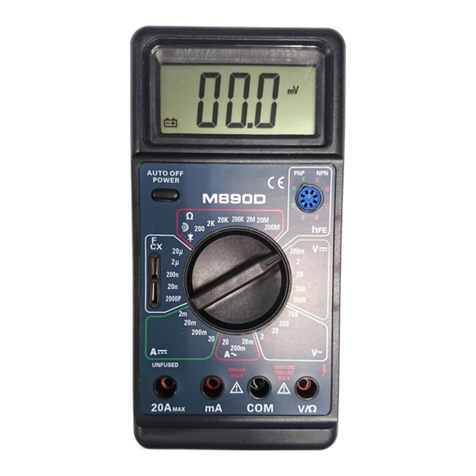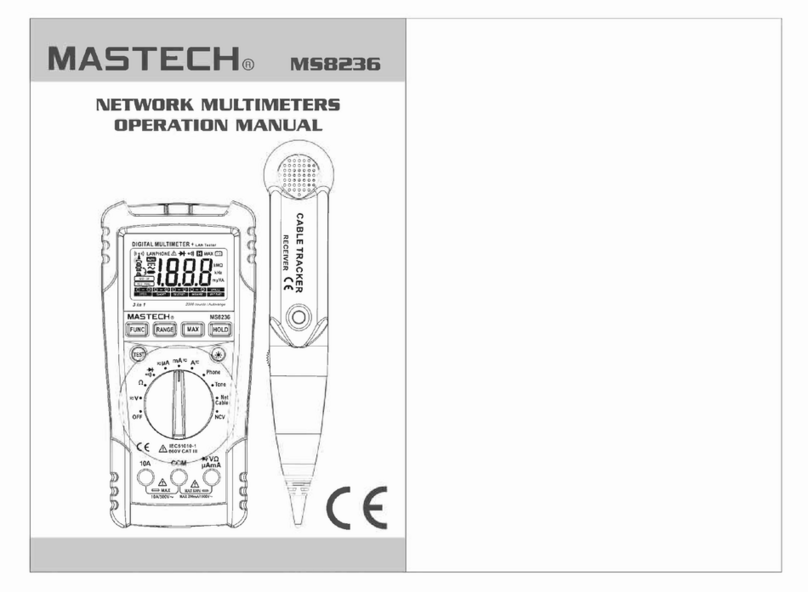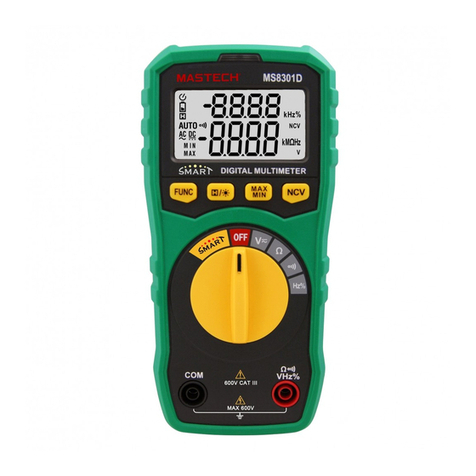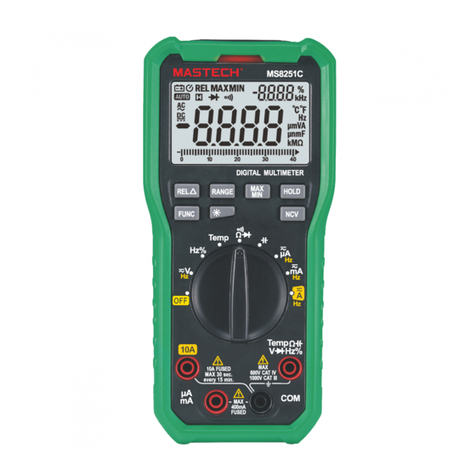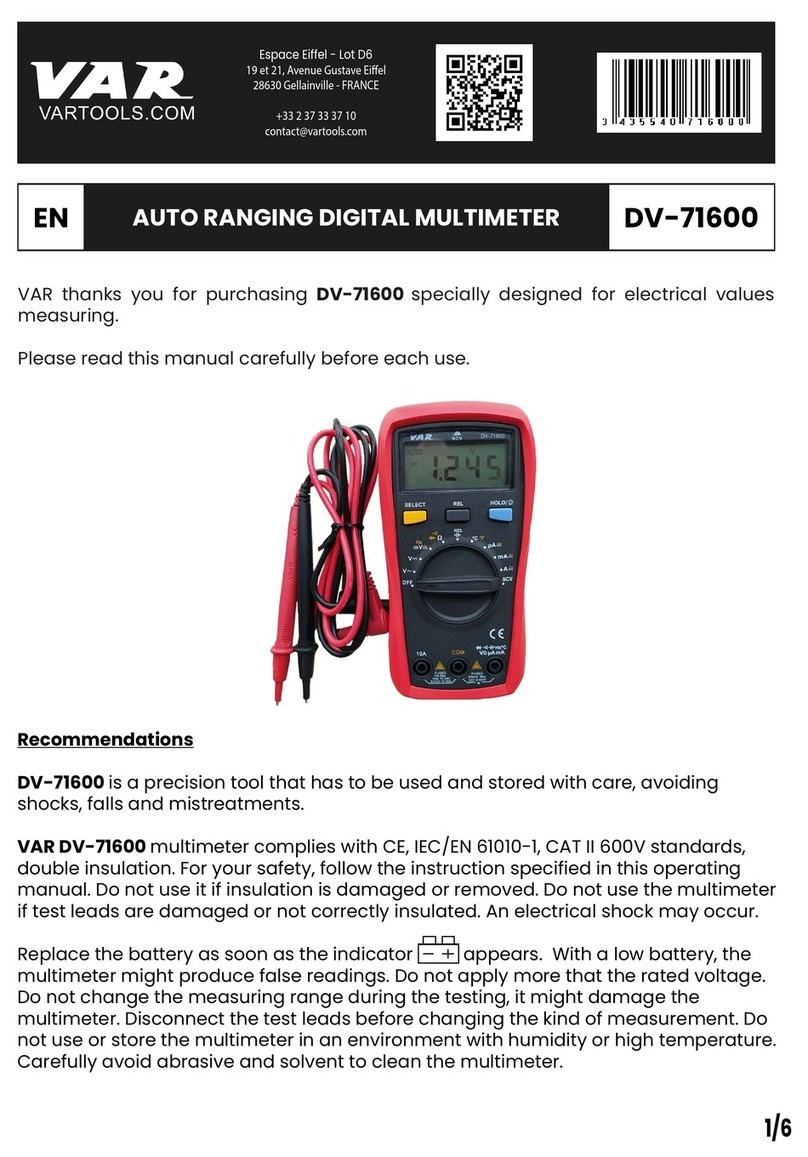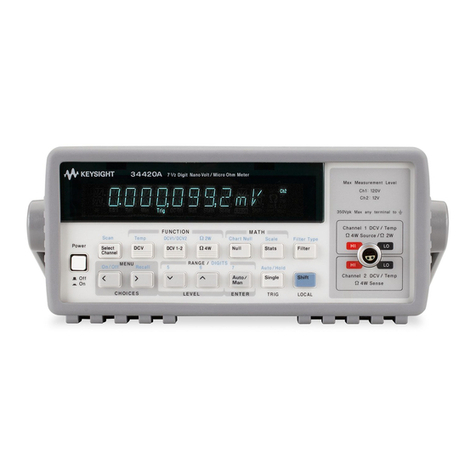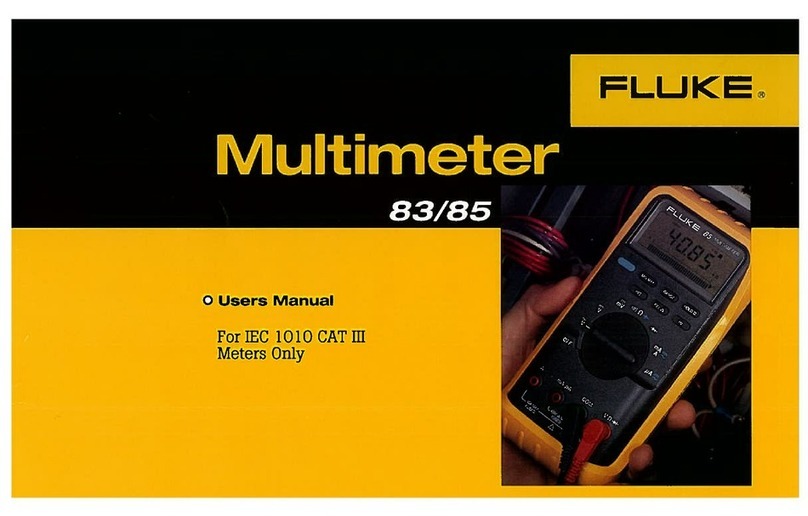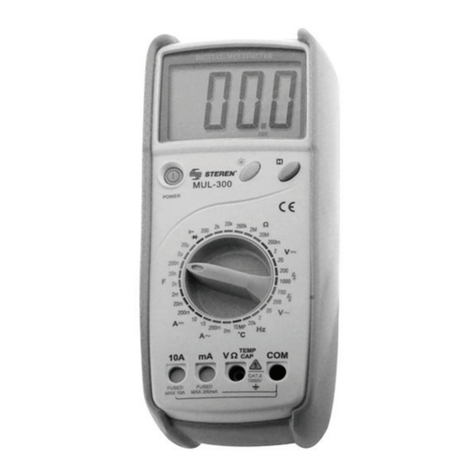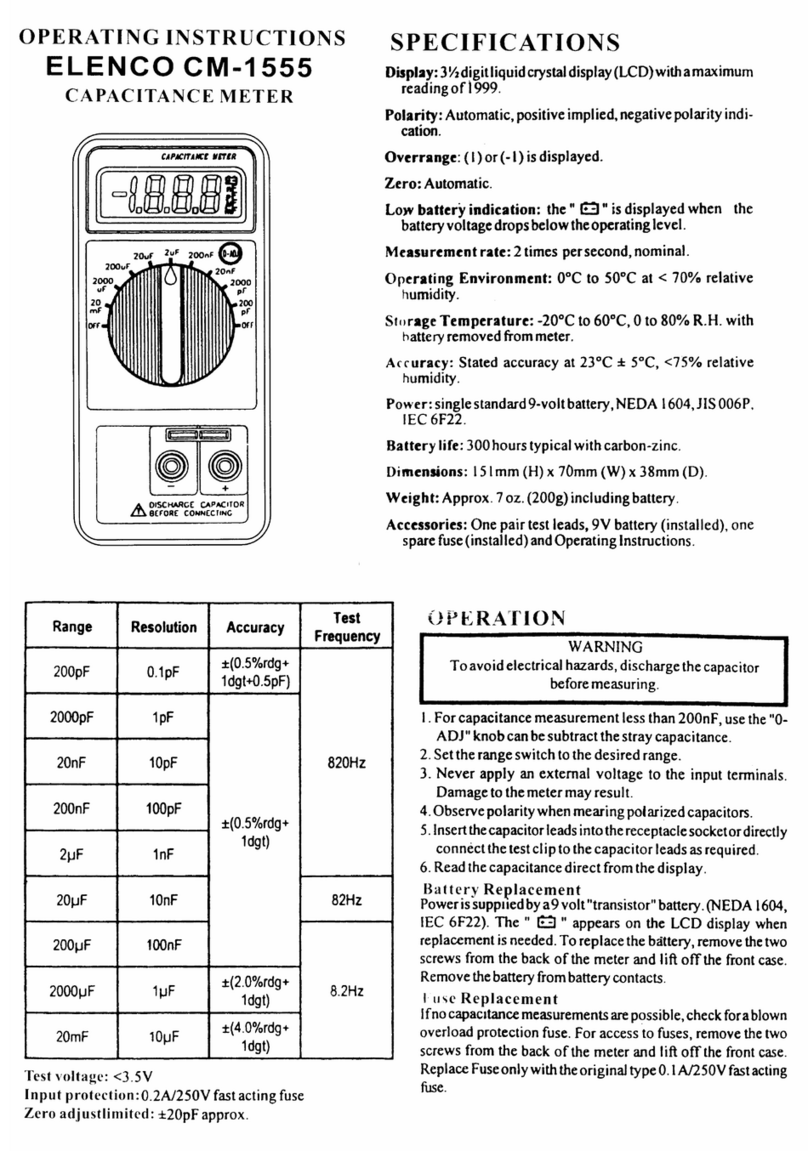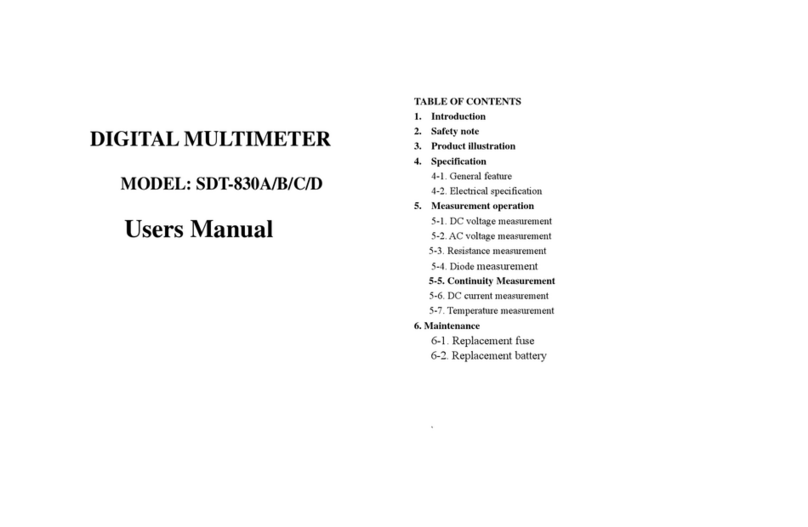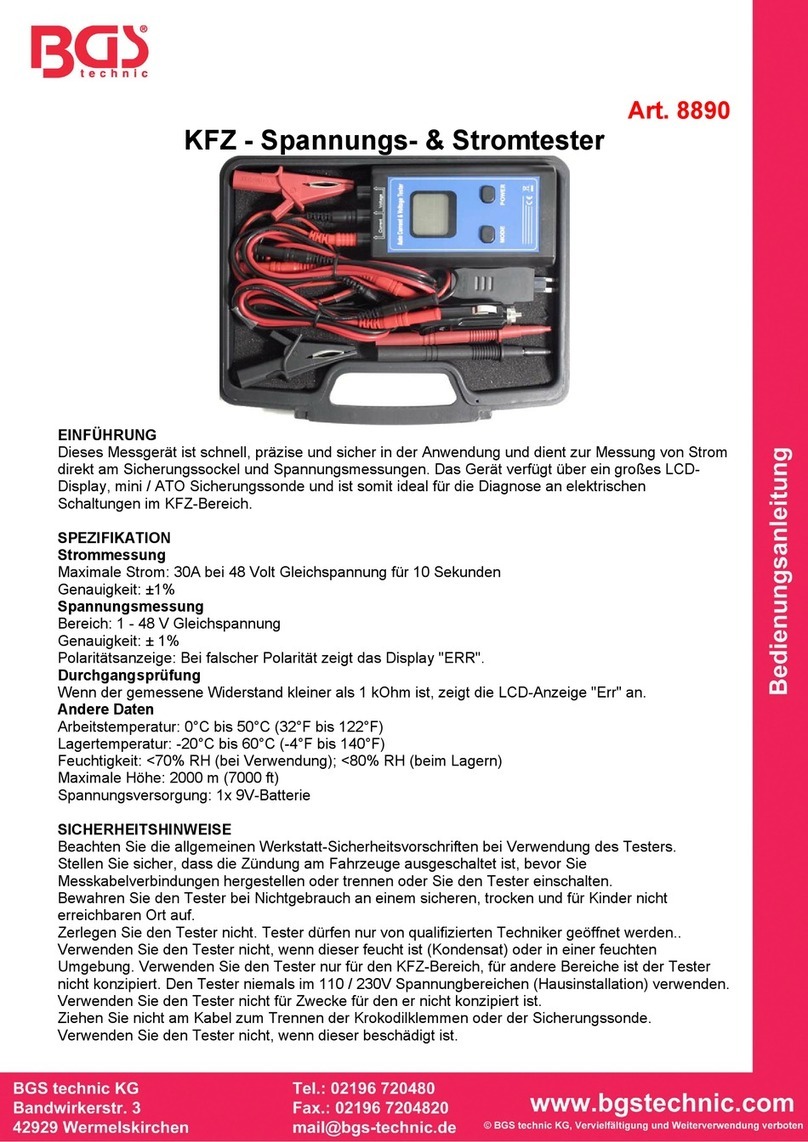
01 02
1. Safety Information 1.2 Use
To reduce the risk of electrical shock, product damage
or personal injury, please follow the safety instructions
described in the user manual. read the user manual
before using the meter.
This instrument meets GB/T 13978-92 and
GB4793.1-2007 (IEC-61010-1,IEC-61010-2-032)
standards for safety requirements for electronic testing
instruments,pollution degree 2,And over voltage
rating of CAT III 1000V and CAT IV 600V.
Follow all safety instructions to ensure safe use of the
instrument.Proper use and protection of the meter will
ensure long life of the meter.
1.1 Preparation
1.1.1
-
-
1.1.2
When using the meter, follow the following
safety rules:
Always take precaution to prevent electrical shock
Never misuse the instrument
Check to see if the meter or any components were
damaged during shipment.
Check the meter and accessories thoroughly
before using.
Inspect test leads and probes for cracks, breaks or
crazes on the insulation before using the meter.
Use test leads provided with the unit.If necessary,
replace test leads with identical specifications.
1.1.3
1.1.4
1.1.5
1.2.1
1.2.2
1.2.3
1.2.4
Turn the rotary switch to the required function and
range to be measured.
When using the CAT Ⅳ environment, if the
measuring voltage between terminals and earth
ground exceeds 600V, CAT III environments or
voltage measurement between the terminal and
the earth more than 1000V, do not measure voltage.
Always be careful when working with voltages above
60V DC or 30V AC RMS. Keep fingers behind the
probe barriers while measuring.Never touch probes
during measurement.
Choose the highest range when the value to be
measured is unknown.
1.2.5 Remove test leads before switching functions on
the rotary switch.
1.2.6 Do not perform resistance, capacitance, diode and
continuity measurements on powered circuits.
1.2.7 Never connect the test leads across a voltage
source while the rotary switch is in the resistance,
diode or continuity mode. Doing so can damage
the meter.
1.2.8 Power off the circuit and discharge capacitors
before testing capacitance.
1.2.9 Do not place the meter in any environment with
high pressure, high temperature, dust, explosive
gas or vapor.
1.2.10 Stop using the meter if any failure or abnormal
function is observed.
1.2.11 Do not use meter unless battery cover is in place
a secured.
1.2.12 Avoid direct sunlight, exposing batteries to
humidity, any strong magnetic field, or high
temperatures to ensure the extended life of the
meter.
Warning
